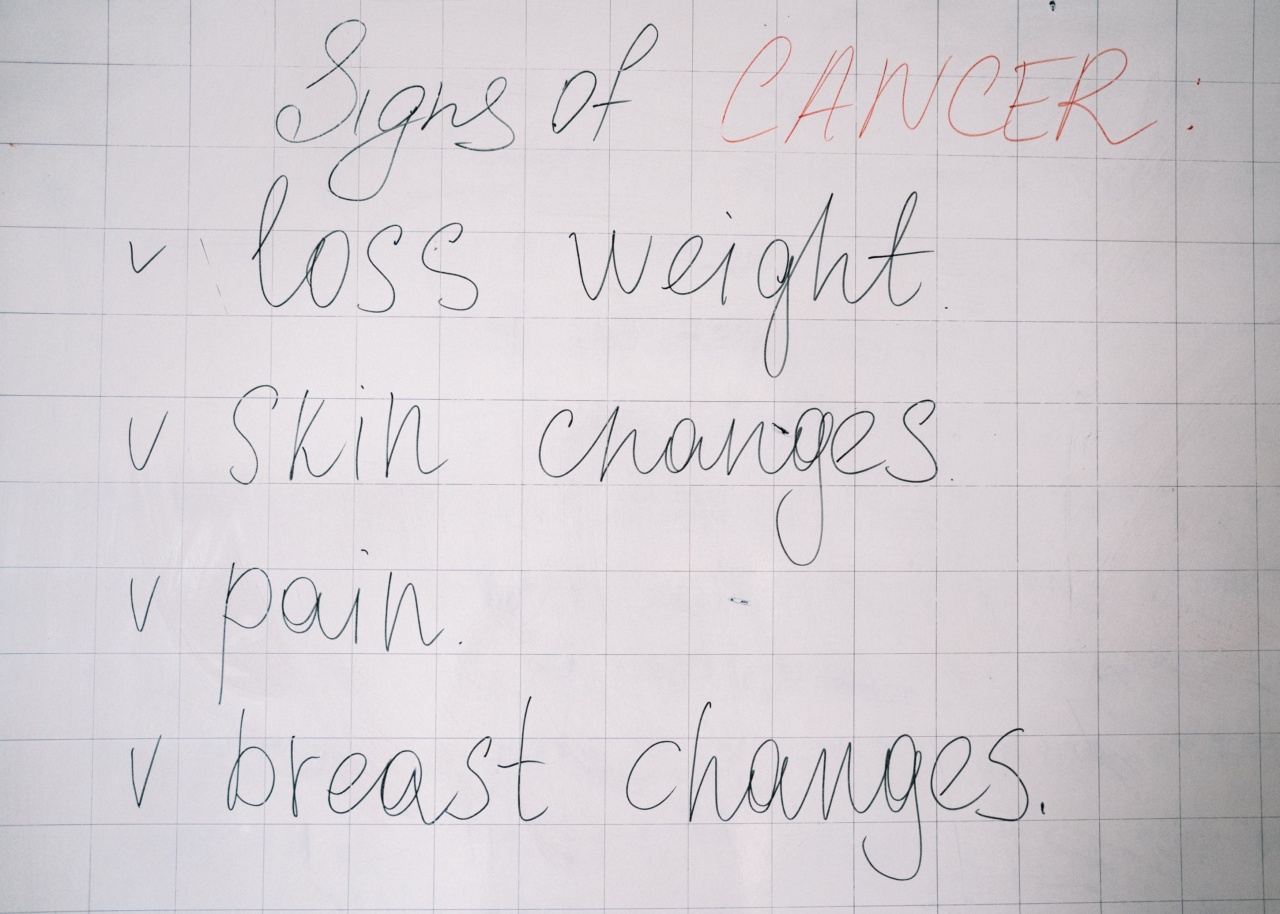Testicular cancer is a condition that develops in the testicles, the male reproductive organs responsible for producing sperm and testosterone.
While it is a relatively rare form of cancer, accounting for approximately 1% of all cancers in men, it is important to be aware of its symptoms and seek early medical attention if any abnormalities are detected.
1. Testicular Lump or Enlargement
The most common symptom of testicular cancer is the presence of a lump or swelling in one or both testicles. These abnormalities are usually painless and can range in size from small pea-sized lumps to larger masses.
It is crucial for men of all ages to perform regular testicular self-exams to quickly identify any changes or abnormalities.
If you notice a lump or enlargement in your testicles, it is advised to consult a medical professional who can conduct a thorough examination.
While not all testicular lumps are cancerous, it’s important to rule out the possibility of malignancy through further tests.
2. Testicular Pain or Discomfort
In addition to a lump or enlargement, testicular cancer can also cause pain or discomfort in the testicles or scrotum. This pain may be constant or intermittent and can range from mild to severe.
It’s important to note that testicular pain can have various causes, but persistent or worsening pain should never be ignored.
Testicular pain can be felt in the testicles, groin, or lower abdomen.
It’s essential to bring any unusual sensations or discomfort to the attention of a healthcare professional, who can determine the underlying cause and provide appropriate treatment if necessary.
3. Importance of Early Detection
Identifying the symptoms of testicular cancer early is crucial for successful treatment and a positive prognosis.
When detected at an early stage, the cure rate for testicular cancer is extremely high, with approximately 99% of patients surviving at least five years after diagnosis.
Regular testicular self-exams play a vital role in early detection. By performing a self-exam once a month, you become familiar with the normal size, weight, and shape of your testicles, making it easier to detect any changes or abnormalities.
In addition to self-exams, annual check-ups with a healthcare professional are important for early detection.
Your doctor can conduct a physical examination, including checking for any lumps or abnormalities in the testicles, and may order further diagnostic tests, such as ultrasound or blood tests, if necessary.
4. Risk Factors for Testicular Cancer
While testicular cancer can develop in any man, certain risk factors can increase the likelihood of its occurrence. These risk factors include:.
a. Age
Testicular cancer is most commonly diagnosed in young and middle-aged men, particularly between the ages of 15 and 35. However, it can affect males of any age group.
b. Cryptorchidism
Cryptorchidism, also known as undescended testicles, is a condition in which one or both testicles fail to descend into the scrotum during fetal development. Men with a history of cryptorchidism have a higher risk of developing testicular cancer.
c. Family History
Having a close relative, such as a father or brother, with a history of testicular cancer increases the risk of developing the disease. This suggests a possible genetic predisposition to the condition.
d. Previous Testicular Cancer
Men who have previously had testicular cancer are at an increased risk of developing it in the remaining testicle. Regular follow-up appointments with a healthcare professional are crucial for monitoring any potential recurrence.
e. Race
Testicular cancer is more common in white men compared to men of other races.
f. HIV Infection
Studies have shown a slight increase in the risk of testicular cancer among individuals with HIV infection.
5. Steps to Take if Symptoms are Present
If you experience any of the aforementioned symptoms or notice any abnormalities in your testicles, it is essential to take prompt action. Here are the steps you should take:.
a. Self-Examination
Perform a testicular self-examination to check for any lumps, swelling, or changes in your testicles. Seek medical attention if you notice any abnormalities.
b. Consult a Healthcare Professional
If you find any lumps or experience pain or discomfort in your testicles, make an appointment with a healthcare professional. They can conduct a thorough examination and recommend appropriate tests to determine the cause of your symptoms.
c. Diagnostic Tests
Based on the initial examination, your doctor may order further diagnostic tests such as ultrasound or blood tests.
These tests can help confirm or rule out testicular cancer and provide valuable information regarding the stage and type of cancer, aiding in treatment planning.
d. Treatment Options
If testicular cancer is diagnosed, your doctor will discuss treatment options based on the type and stage of cancer. Treatment may include surgery, radiation therapy, chemotherapy, or a combination of these approaches.
e. Emotional Support
A diagnosis of testicular cancer can be emotionally challenging.
It’s important to seek emotional support from loved ones, support groups, or professional counselors who can provide guidance and help you cope with the physical and emotional aspects of the disease.
6. Conclusion
Early detection of testicular cancer is crucial for successful treatment and improved outcomes. Awareness of the symptoms, regular self-exams, and prompt medical attention can significantly contribute to the early diagnosis of testicular cancer.
Remember, prevention and early diagnosis are key in combating this form of cancer and protecting your overall health.




























